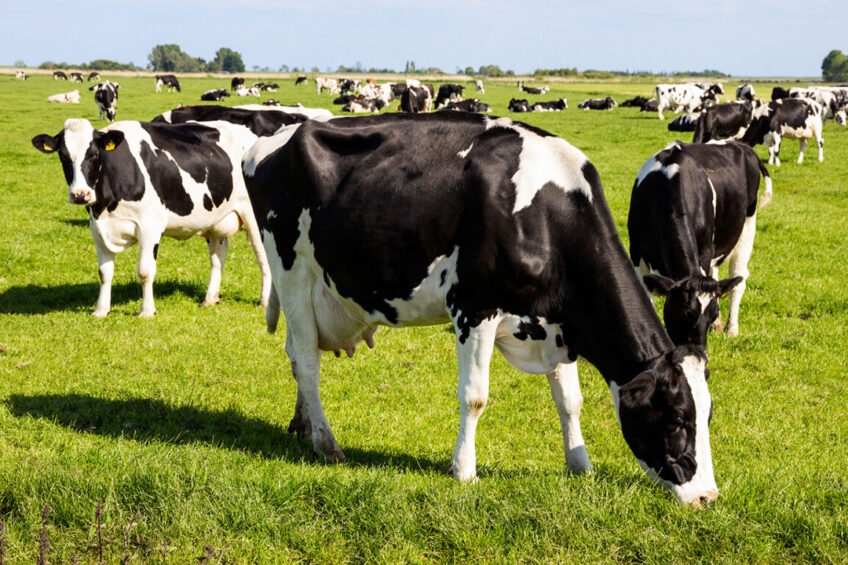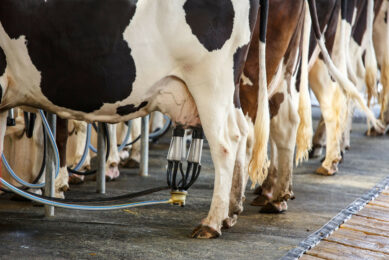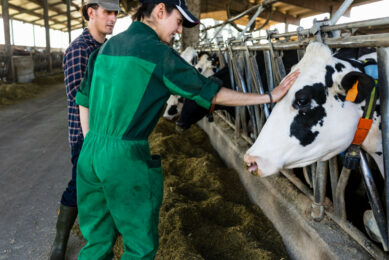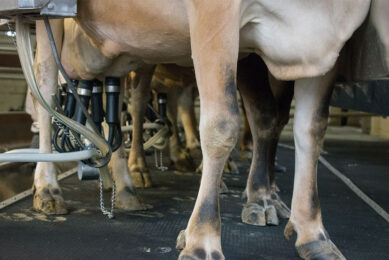7 nutritional tips for controlling lameness

Bovine lameness in cattle is one of the key endemic diseases causing health and welfare problems and production losses.
Approximately 85% of the cases of lameness are due to foot health problems such as sole ulcer, digital dermatitis, foot rot, deep infection, and laminitis, with only 15% due to lesions elsewhere on the limb. The magnitude of the economic loss resulting from lameness in dairy units is very similar in different countries, mostly varying between €40-50 per cow. This loss may be attributed to factors such as reduced milk receipts, early culling, reduced live weight, treatment cost, longer calving interval, and extra labour cost.
Nutrition and lameness
Although management strategies such as sanitation, stocking density, foot bathing, trimming, etc. have been widely adopted for control of lameness in cattle, little is known about the impact of nutrition. The following are nutritional tips useful for the control of the lameness.
![]() Protein nutrition
Protein nutrition
High-quality protein should always be provided as it constitutes a great part of the hoof structure. The amount of protein given to dairy cows should not, however, exceed 16% (on a DM basis), especially when a greater part thereof is composed of rumen-degradable proteins which increase the risk of lameness due to the production of large amounts of ammonia. Ammonia has a toxic effect, and high concentrations of ammonia in the blood can damage sensitive lamellae and corium in the hoof, thereby leading to lameness.
![]() Dietary fat
Dietary fat
Hooves are also composed of fats, which prompts the inclusion of fat sources in the animal’s diet to protect the hoof and prevent lameness. The associations between digital fat pad depth and body condition score suggest that dietary precursors for fats including preformed lipids in the diet and those derived from short-chained fats may influence lameness. If cows do not get enough fat, they can get too thin and have a thinner fat cushion between the foot bone and hoof wall. The fat cushion in the hoof is important to absorb shock and hence prevent lameness.
![]() Carbohydrates
Carbohydrates
Increased feeding of fermentable carbohydrates has been implicated as a cause of lameness in cattle and should, therefore, be used in limited amounts in cattle feeding, or the rumen microbes that produce lactic acid increase, and the pH is reduced. As the rumen pH decreases, endotoxins can be produced which trigger histamine release. This causes vasoconstriction, dilation, laminar destruction, hoof deterioration, and the lameness process develops.
![]() Mineral supplement
Mineral supplement
Mineral nutrition also plays a vital role in hoof health. Calcium is required for activation of the enzyme needed to form keratin and is also required for the process of creating crosslinks between keratin fibres. Sufficient amounts of trace elements such as copper and zinc are also needed to maintain the immune function and hence prevent bacterial infection of the hooves in grazing animals, particularly so in a period of very rapid pasture growth during spring. Supplementary feeding of these elements should, therefore, be considered in these cases.
![]() Vitamin supplement
Vitamin supplement
Vitamin A is needed for normal growth, development, and maintenance of skeletal and epithelial tissues including the claw epidermis, and also plays an important role in developing the structure and quality of horn tissue. Vitamin D (jointly with vitamin A) plays a role in hoof growth and helps maintain a waterproof barrier on the outside of the hoof. Biotin, one of the B vitamins, is also important in hoof health. Providing 20 mg/day of supplemental biotin has been shown to cure sole ulcers quicker, reduce sole haemorrhages, and reduce the incidence of inter-digital dermatitis. Vitamins are also involved in pathways that control and limit fat oxidative damage may be important to hoof protection, health, and integrity.
![]() Diet changes
Diet changes
In one study, there was a significant increase in sole lesions 8 to 12 weeks after calving when the diet was changed suddenly from high to low fibre compared to feeding the same diet all the time. Rapid diet changes can also cause a shift in rumen microbial populations, which may favour species such as Treponema, which plays a role in digital dermatitis and lameness. By carefully formulating the diet and monitoring cow health, the occurrence of lameness can be minimised.
![]() Grazing management
Grazing management
- Hoof infections are more common where pastures are on underlying clay than in sandy, chalky, or limestone areas. Constantly wet hooves become soft and more easily damaged. Muddy ground with flints or small stones is the most dangerous since the flints penetrate the hoof and allow the infection to enter. Susceptible animals should, therefore, be prevented from grazing in these pastures.
- Temperate grasses are frequently characterised by a low content of dry matter (8-12% while the optimum level for dairy cows ranges from 50-60%). The ingestion of low-DM feeds is often associated with the reduced production of saliva per kg DM eaten. As a result, there is a reduced pH in the rumen and acidosis may develop because of the reduced buffering action of saliva. Acidosis is often associated with lameness. Although decisive evidence for such a relationship is scarce, rumen pH should be kept within the normal range through the use of buffers to prevent lameness.
- Cross-infection of D. nodosus (gram-negative, anaerobic obligate bacteria causing footrot and separated hooves) may occur between sheep and cattle grazing on the same pasture. Cows affected by D. nodosus may only have a mild infection that can be easily treated with drugs. In other cases, however, the infection may be too severe to be treated and D. nodosus can survive for long periods in the hooves of cows thereby presenting a risk when it comes to infecting healthy sheep. It is, therefore, important to take account of this when implementing mixed grazing programs for combating footrot in sheep.
- Under poor grazing conditions, cows must spend time walking to search for food, which causes changes in gait over time with resulting hoof damage. With good-quality pastures, cows can show rapid improvements in gait due to the relatively short time of grazing.
References are available from the author upon request.










